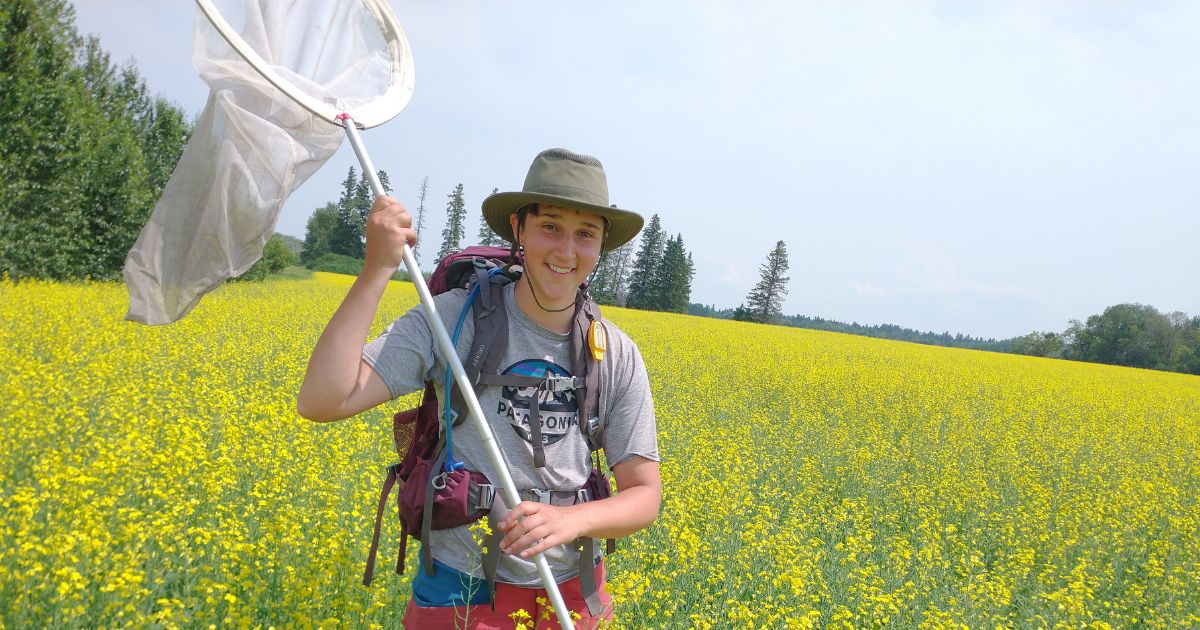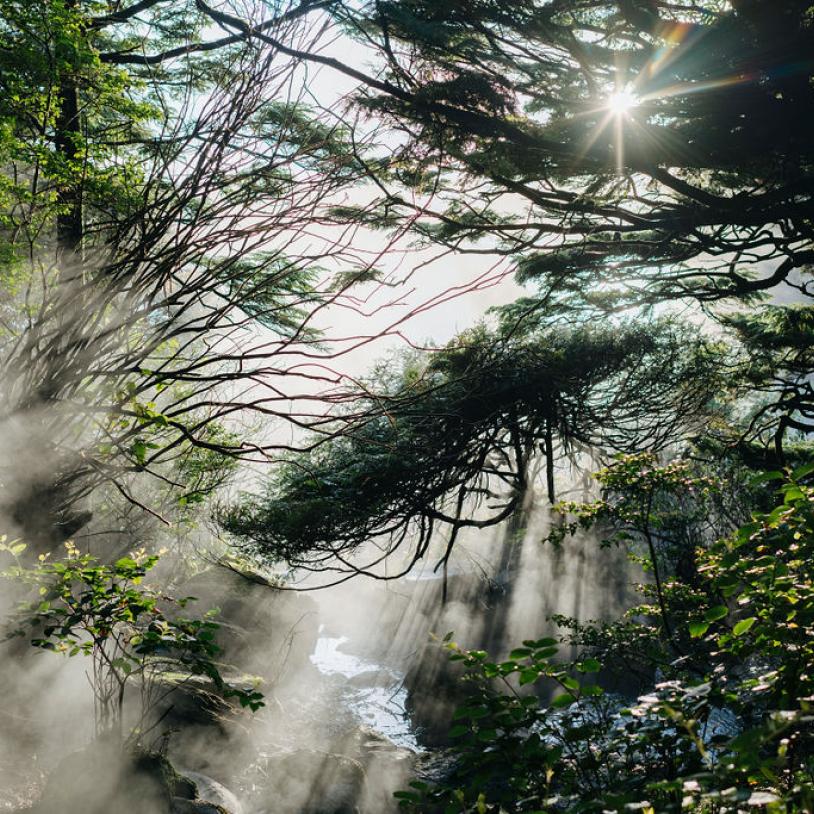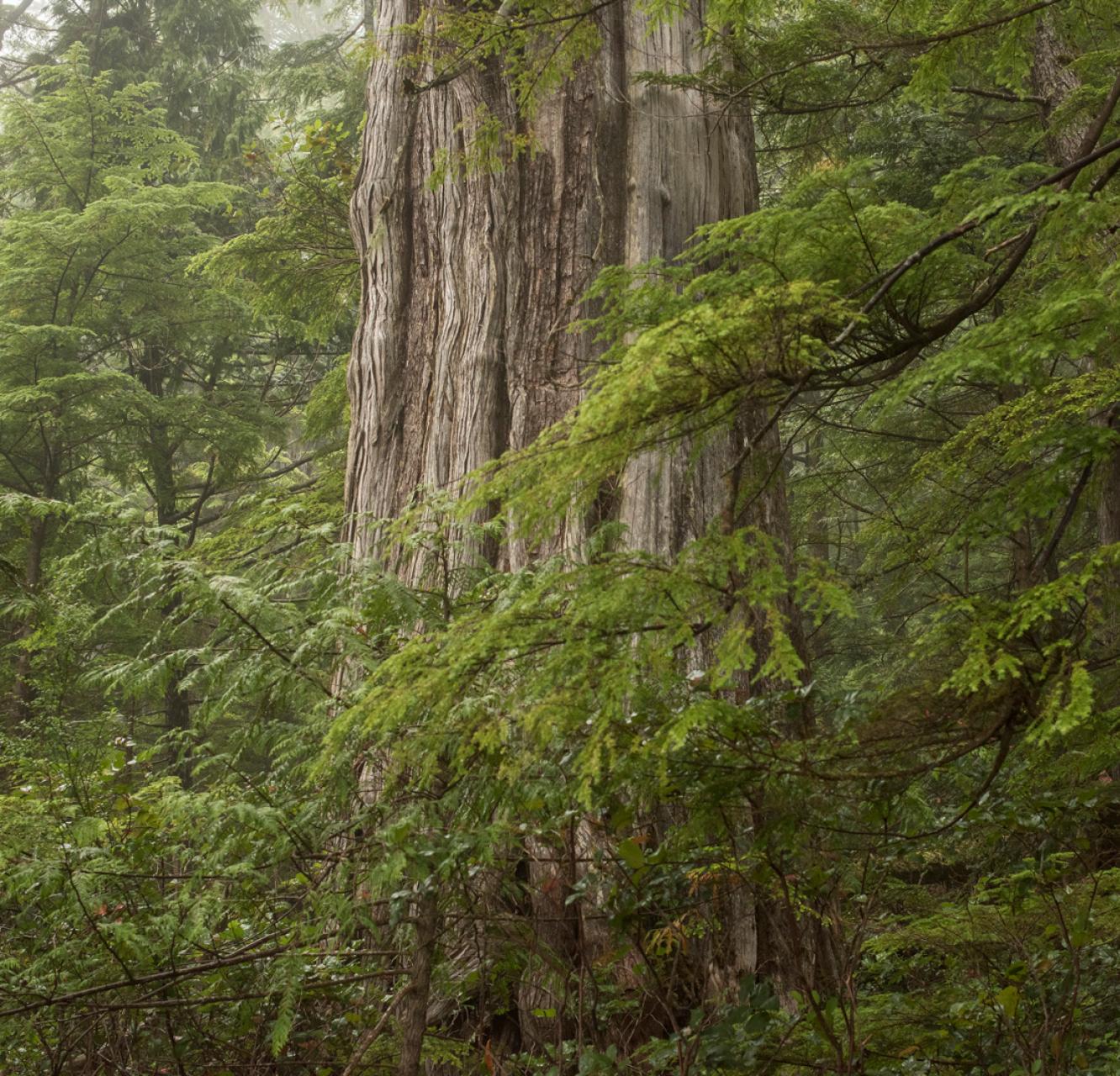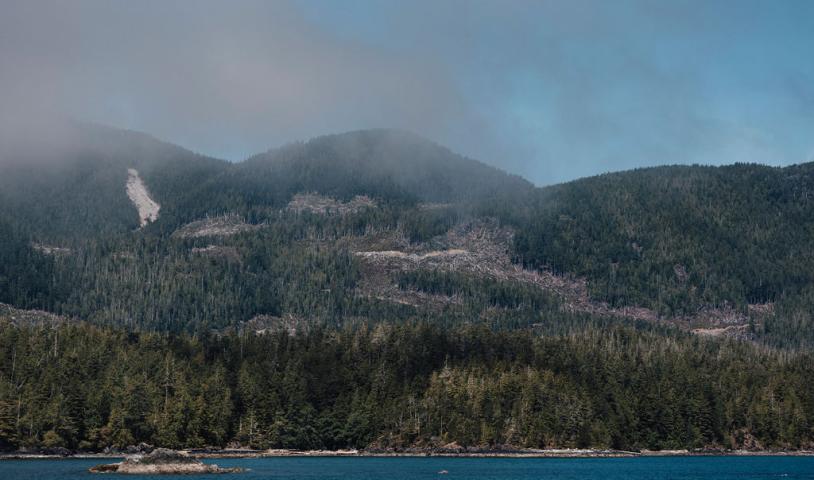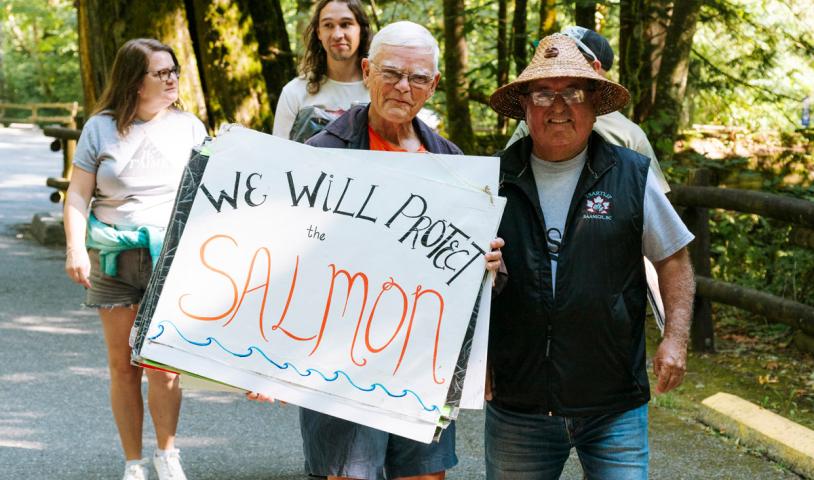What’s Up with big trees: Cutting through the noise on old‑growth forests
Thursday, March 21, 2024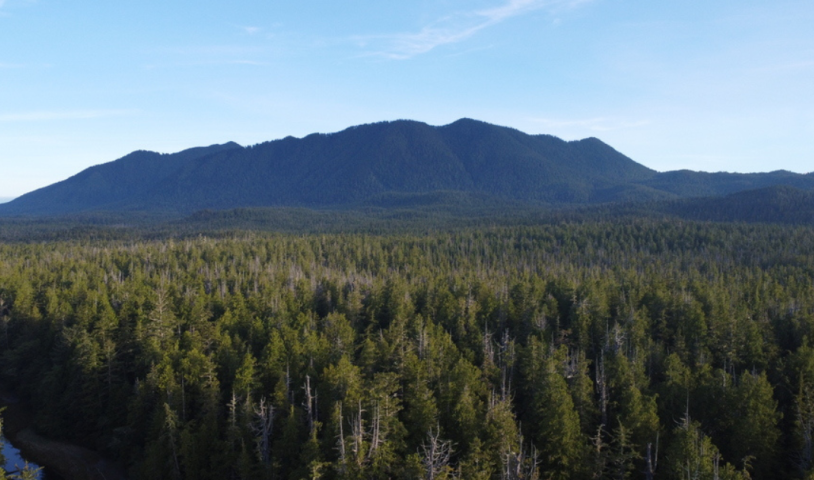
“And so I wake in the morning
And I step outside
And I take a deep breath and I get real high
And I scream from the top of my lungs
What's going on?”
—What’s Up, 4 Non-blondes
Hi, I’m Tobyn Neame, Forest Campaigner for the Wilderness Committee. The world of forest policy in B.C. can be complicated and tough to follow, and I’m here to clear that up for you. Whether you’re just trying to gain more information, set up meetings with your MLA to advocate for old trees or call Premier David Eby’s office to turn up the heat, this blog will help you along.
In the past few years, we have witnessed unprecedented drought conditions and record-breaking wildfire seasons that cost people their communities, connection to nature and livelihoods. Now more than ever, we need to protect old-growth forests for their power in combating the twin crises of biodiversity loss and climate change.
The BC NDP government has talked circles about protecting old-growth forests and the biodiversity they support. The legislative session this spring is the last one before this fall provincial election, and we’re expecting some changes to policies and, potentially, laws on old-growth forests and biodiversity. But don’t worry! We'll keep you up to speed. We will provide updates when those changes are announced. For now, let’s take stock of where we’re at.
The context for clearcuts
Let’s start with a timeline of the last few years.

In September 2020, the B.C. government released the Old Growth Strategic Review (OGSR) and subsequently committed to implementing the reports’ recommendations. This was the first time the B.C. government acknowledged that old-growth forests are facing loss that cannot be mediated under the status quo of logging — something science had already been telling us for decades.
The OGSR spelled out 14 recommendations for the government to carry out. These recommendations, if implemented, would create the needed “paradigm shift in the way we approach managing forests” (OGSR 2020). Recommendation 6 — intended to be implemented within the first six months of the B.C. government’s commitment to the review — highlighted the need to temporarily defer logging in at-risk old-growth forests.
The logging deferrals would make time for this much-needed paradigm shift without losing more old-growth forests in the process. However, the six-month deadline went by and logging continued. People came together, in what was clearly the largest act of civil disobedience in Canada’s history, to protest against the logging of old-growth forests in Fairy Creek, thus compelling the B.C. government to assemble the Old Growth Technical Advisory Panel (OG TAP), which issues its report in November 2021.
The OG TAP report included recommendations to defer logging in 2.6 million hectares of the most at-risk old-growth forests — the iconic ecosystems we all associate with the term old-growth, the stands with the biggest trees and the most biodiversity. These deferral recommendations came with maps of where the most at-risk forest is. The OG TAP’s work was only as strong as the flawed B.C. government data it was based on, but this marked a big change in the way the province talked about the remaining old-growth.
The BC NDP government committed to fulfilling the recommendations of its experts. But the government’s response since has been limited. So far, actions to protect old-growth have lacked the needed transparency, which was another recommendation of the OGSR.
Since committing to the OGSR and the OG TAP, the B.C. government has made new old-growth forest protection and conservation promises to a tune of $505 million. However, because of the lack of transparency, it is unclear how new systems, including the B.C. government’s Forest Landscape Plans, will accomplish the goal of protecting old-growth.
One of the reasons old-growth forests are so important is their ability to support a large diversity of species. So while the new Nature Agreement and the Biodiversity and Ecosystem Health Framework (BEHF) would logically include the protection of old-growth forests, it’s unclear how these plans would connect to the OGSR or the OG TAP.
After almost four years of promises and commitments to old-growth, where are we now?

Too much talk-and-log, not enough action
All in all, the province hasn’t done well when it comes to honouring the promises it made back in 2020 and taking action to protect old-growth forests.
The Wilderness Committee, with some allies, issued report cards at key milestones (2021, 2023) to track how the B.C. government was doing on their commitments of “implementing the report [Old Growth Strategic Review] in its totality” and “accelerating our actions to protect our oldest and rarest forests”.
Unfortunately for old-growth forests, the BC NDP’s grades have been dismal (and they have not been a joy to have in class).
While recent announcements have brought a glimmer of hope on the horizon again, the B.C. government’s work on old-growth, over the last three years, has ultimately served to confuse the public and allow for the continuation of status quo logging — the classic Talk and Log scenario B.C. is so familiar with.
In its recently updated logging deferral data, the B.C. government began classifying some old-growth as uneconomical to harvest once again. It combined this subjective category with protected areas to inflate the amount of old-growth they say won’t be logged.
Lumping these uneconomical to harvest forests — stands of trees that tend to grow on steeper slopes at higher elevations or in swampy areas as smaller, twistier trees — in with protected or deferred old-growth paints a much rosier picture of the government’s action to date without actually making any changes to status-quo logging.
The OG TAP stopped using this category, instead opting to add more detail. Sadly, the BC NDP government has re-adopted it, likely due to pressure from logging corporations.
By resurrecting this controversial tactic of combining and conflating protected or deferred forest with those unlikely to be targeted by the logging industry in the near future, the B.C. government now boasts 80 per cent of old-growth forests are safe from logging, without providing additional information or maps to verify this.
The recently updated data also shows a 400,000 hectares (from 11.1 million hectares to 11.5 million hectares) increase in old-growth forests in the province and a one million hectares (from five million to four million hectares) decrease in the amount of at-risk old-growth. Again, there is little transparency on why these numbers have changed.
The current status of old-growth forests
Of the 11.5 million hectares of old-growth in B.C. currently, 2.6 million hectares were recommended for deferral from logging by the OG TAP because of their most at-risk status. This 2.6 million hectares falls a little under five per cent of the total forested area in B.C. It also represents just over half of the at-risk old-growth in B.C.
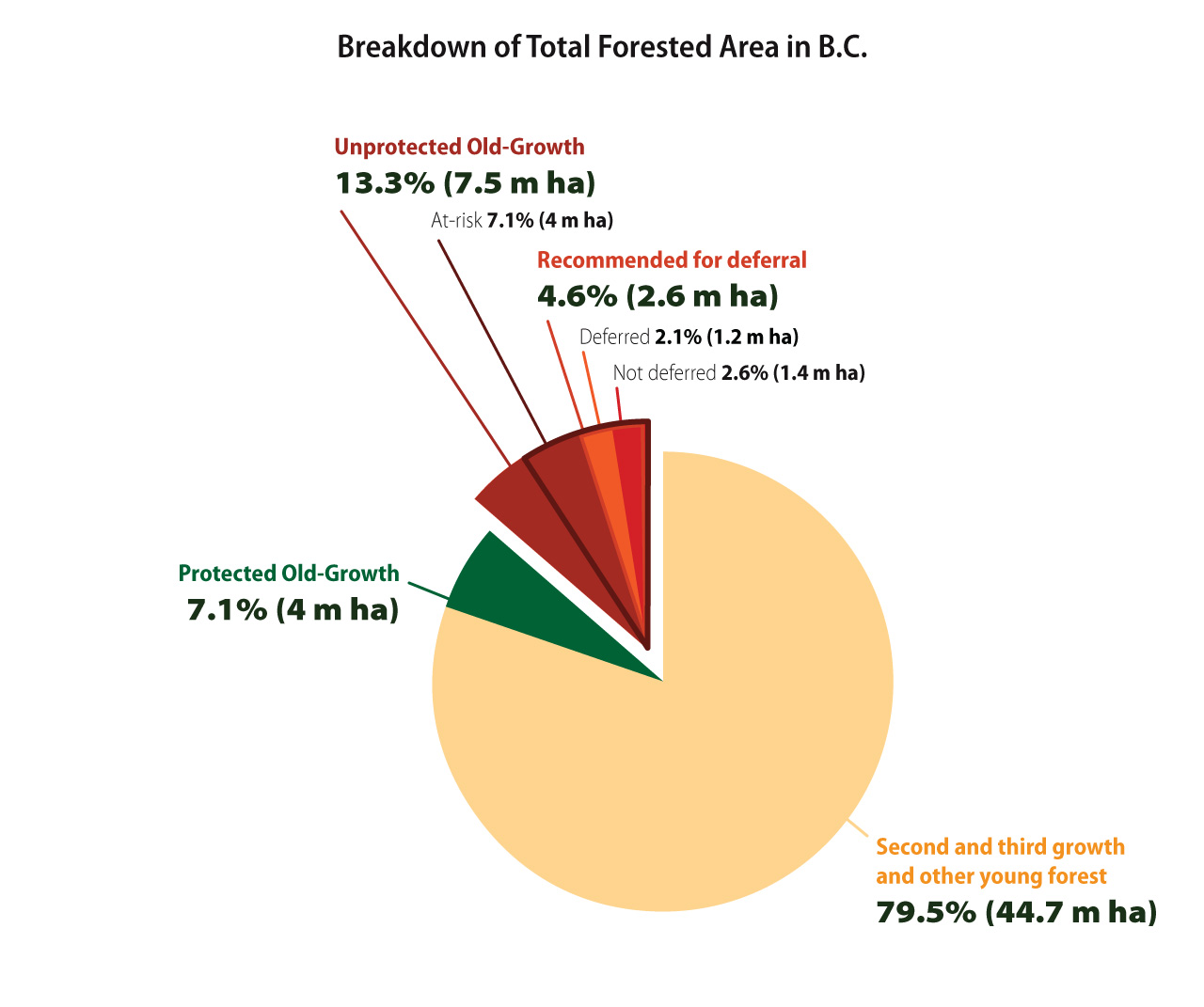
The B.C. government now says that 2.4 million hectares of old-growth have been deferred from logging, or newly permanently protected, since 2021. But it also says that only half of that is from the at-risk forests, the 2.6 million hectares designated by the OG TAP. The remaining 1.2 million hectares, it says, comes from other old-growth areas, possibly the uneconomical to harvest old-growth.
In early 2024, a leaked map from the B.C. government revealed that many of the most iconic old-growth forests had not been deferred. This highlights the lack of government transparency. And this lack of transparency means there is no way of knowing how much old-growth is lost while we wait for the B.C. government to implement the OGSR in its entirety.
Since 2020, at least 112,000 hectares of old-growth have been logged with poor data from 2022 and no data from 2023.
By monitoring logging applications on the B.C. government’s website, reviewing satellite imagery and doing field assessments, we know that thousands of hectares of this have been logged in the last three years, and continue to be targeted today. Watch our video from last year that shows some of the massive clearcuts in old-growth forests prioritized for deferral.
By withholding details about the deferrals it says are in place, the BC NDP government is avoiding accountability. Without knowing where and when deferrals are enacted, we can’t confirm whether they’ve ended and are now being logged or even if logging companies are violating deferrals that First Nations and the province assume are in place. Without knowing where the deferrals are, we can’t know how many of them have been implemented in areas where logging was planned or approved, and how many are in areas that weren’t slated for logging any time soon.
This matters a lot! As OG TAP member Dr. Karen Price has argued, meaningful deferrals are the ones that stop logging. We know that thousands of hectares of forest has been logged within the 2.6 million hectares of priority deferral area, but we don’t know how much logging has been stopped by deferrals. Price and the other OG TAP scientists explained that deferrals were crucial in at-risk forests where logging was already planned. But we cannot know if planned logging areas are under protection or not because of the B.C. government’s lack of transparency.
What must the government do next
The B.C. government has not clarified which at-risk forests are temporarily deferred from logging and which deferrals stopped planned logging that threatens biodiversity. The OGSR recommended that the B.C. government improve public information and increase transparency. But the B.C. government has failed to achieve this.
It’s crucial to remember that logging deferrals are not permanent protection, but rather the first step to allow time for government-to-government discussion, between B.C. and First Nations titleholders, without losing old-growth forests forever in the meantime.
It has been three years since the deadline for deferrals set by the OGSR report. It’s safe to say the B.C. government failed to keep its promises to implement the OGSR effectively. If the BC NDP government wants to move forward and keep its promises on old-growth, it must follow the following three steps immediately.
1. The B.C. government must implement deferrals immediately in line with the OGSR and OG TAP reports.
Recommendation 6 of the OGSR states that before it can take further action, the B.C. government must take immediate action on the most at-risk old-growth forests and halt logging activities there. This was recommended to ensure that once longer-term plans are established, there would still be old-growth forests left to protect. The OG TAP determined where those threatened stands were and mapped them as priority deferral areas. Since the OGSR and the OG TAP reports, a lot of old-growth logging has occurred, even within these priority-for-deferral areas. But it’s not too late to immediately halt logging in old-growth. The B.C. government just needs to step up and defer logging in the most at-risk old-growth forests immediately.
2. The B.C. government needs to fully fund the deferral process and provide compensation equal to or above any revenues First Nations lose as a result of deferrals.
Many First Nations receive revenue from logging as the rightful titleholders of the forests that logging is occurring in. This revenue is particularly necessary for Nations that have been disenfranchised from other income resources. The B.C. government needs to value and, in turn, cover the revenue that First Nations may lose as a result of additional deferrals. While some money has been set aside for old-growth and biodiversity by the B.C. government lately, it is not enough for the 1.4 million hectares of at-risk priority-for-deferral old-growth that remains open to logging.
3. Improved transparency from the B.C. government
OGSR recommendation 5 states that the B.C. government needs to increase transparency in data and publicly available information about old-growth forests. Since committing to the OGSR the B.C. government has not increased transparency. It remains nearly impossible to determine the truth and impact of what the B.C. government says it is doing in response to some of the report’s recommendations. This is highlighted by the recent map leaked from the B.C. government.
The government needs to release information on the current deferral locations and the amount of logging both priority-for-deferral and all other old-growth forests have undergone so far. This will boost accountability and transparency. The new data, released in March 2024, does little to increase transparency, and more to confuse the public and dilute the government’s lack of action on protecting old-growth forests.
While few forests are deferred from getting logged, there isn’t enough discussion to protect them once the deferral period is up. The B.C. government needs to be a clear champion for the outcome of permanent protection, providing funding and other resources necessary to make conservation the best economic option for First Nations and other communities.
People power for protected forests
While the last few years of stall tactics and obfuscation on old-growth by the province have been incredibly frustrating, the prominence of this issue in the public imagination and the halls of the B.C. government is an indication of the power of the tens of thousands of you who’ve spoken up and taken action for forests.
There is still time left to turn the tide on old-growth logging, and people power remains the force that can get us there.
We are currently approaching a provincial election, which means the pressure is on the BC NDP government to show what they have been able to accomplish during their time in office. We expect more announcements and concrete action in the weeks and months ahead.
We have been, and will continue to be, monitoring these announcements and assessing their real impacts, cutting through the BC NDP’s narrative and breaking down how closely the government’s actions align with the promises they’ve made.
We’ll also provide escalating opportunities for you to speak up, take action and get creative through the spring and summer to ensure old-growth is an issue no one running for office this October can ignore.
The OGSR was very clear on what is needed to protect old-growth forests and why it needs to be done. The B.C. government must step up and finally do what it committed to.
Working together, we can hold the B.C. government accountable and ensure action on old-growth logging happens.
Thank you for reading. Feel free to get in touch if you want to connect about ways to fight for old-growth forests in your community. Contact me at tobyn@wildernesscommittee.org.
For the old forests and all the importance they hold,
Tobyn
